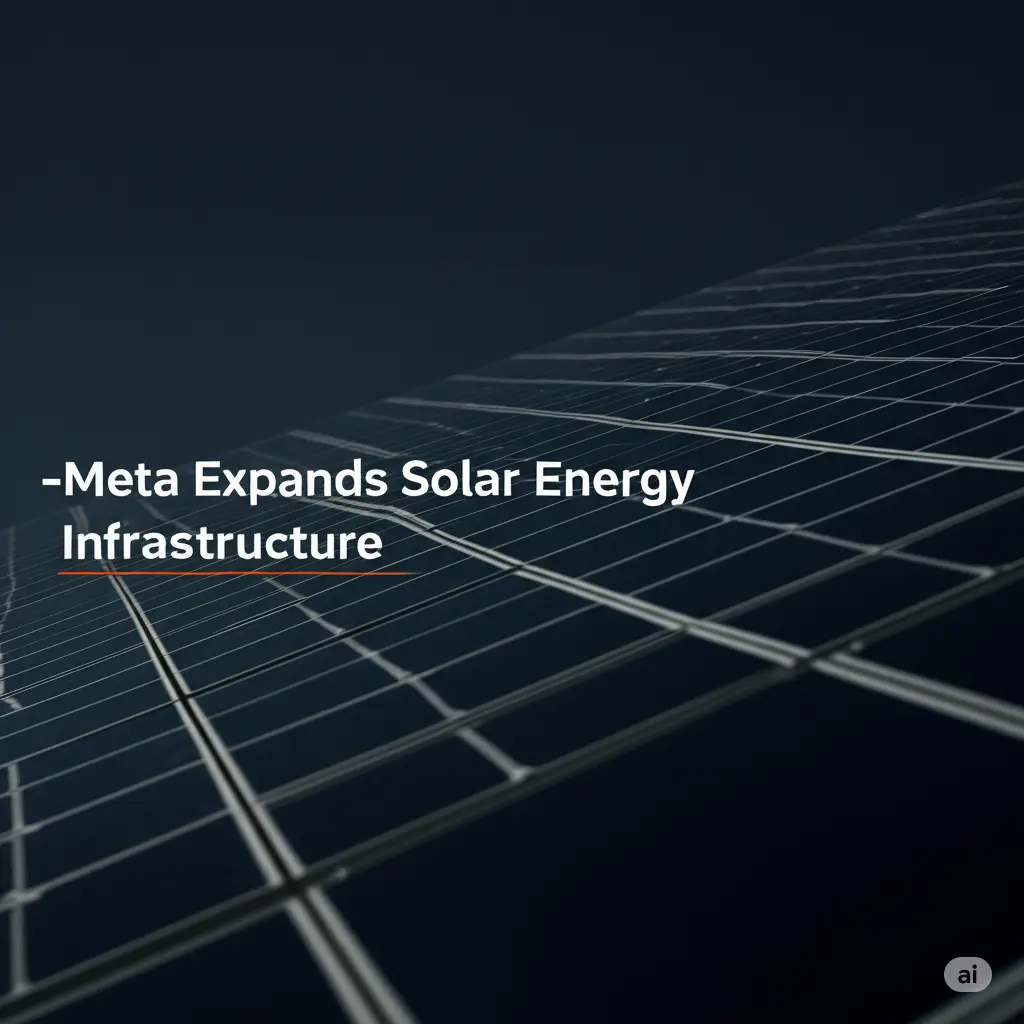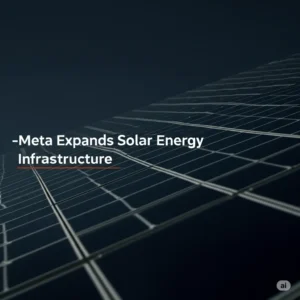Meta’s Strategic Leap: Scaling Renewable Energy for AI Infrastructure
By Gudstory Org AI News (May 28, 2025)
Thank you for reading this post, don't forget to subscribe!Meta Expands Solar Energy Infrastructure with a significant new initiative aimed at supporting its sustainable AI operations. The company has secured an additional 650 megawatts (MW) of solar power in partnership with leading renewable energy developers. This strategic expansion reinforces Meta’s ongoing commitment to align environmental sustainability with AI innovation. The newly added solar capacity is distributed across multiple U.S. states, powering the company’s rapidly growing data center footprint.
Powering the AI Revolution with Renewable Energy
Artificial Intelligence training models, especially large language models and vision transformers, require immense computational power. This translates to massive energy demands, most of which are concentrated in hyperscale data centers. To support its growing AI capabilities while reducing its carbon footprint, Meta is prioritizing investments in clean energy assets.
By adding 650MW of solar power, Meta is now on track to maintain 100% renewable energy usage across its operations—a goal the company initially reached in 2020 and continues to uphold.
Key Takeaways:
-
Meta’s new solar investments bring its total clean energy capacity to over 10 gigawatts.
-
The energy will support AI-driven products, such as generative models, recommendation engines, and content moderation systems.
-
Solar projects will also boost local economies, creating thousands of construction jobs and long-term maintenance opportunities.
Project Partners and Geographic Footprint
Meta has partnered with Silicon Ranch, First Solar, and NextEra Energy, among others, to develop this solar infrastructure. The new projects are spread across Georgia, Texas, Arizona, and Indiana, offering region-specific benefits like reduced grid strain and improved renewable integration.
These projects are strategically located near Meta’s latest data centers, minimizing transmission losses and enabling real-time energy balancing.
Breakdown of New Solar Investments by Region:
| Region | MW Capacity | Project Partner | Completion Target |
|---|---|---|---|
| Georgia | 200 MW | Silicon Ranch | Q4 2025 |
| Texas | 150 MW | NextEra Energy | Q2 2026 |
| Arizona | 180 MW | First Solar | Q1 2026 |
| Indiana | 120 MW | Invenergy | Q3 2025 |
Driving Forces Behind Meta’s Renewable Push
Meta’s decision to add another 650MW of solar energy is not just about sustainability; it’s also driven by economics and regulatory foresight.
-
Energy Cost Efficiency: Solar power offers long-term savings and price predictability amid rising grid electricity costs.
-
Regulatory Compliance: States are tightening emissions regulations for data centers; preemptive investment in renewables ensures uninterrupted operations.
-
Investor Pressure: Institutional investors are increasingly prioritizing ESG-compliant tech firms. Meta’s renewable expansion strengthens its ESG credentials.
How Solar Energy Powers Meta’s AI Ecosystem
The AI models Meta is developing—spanning LLaMA (Large Language Model Meta AI), content classifiers, and augmented reality systems—require continuous access to GPU clusters. These are housed in AI-optimized data centers, which are now being built with direct connections to solar farms.
Meta’s approach involves smart energy routing, where renewable power is prioritized in AI cluster operations during peak demand. Energy storage systems using lithium-ion batteries and other technologies are also being implemented to ensure uptime during solar intermittency.
Environmental and Economic Impact
Meta’s solar expansion will help avoid over 1.1 million metric tons of CO2 emissions annually—equivalent to removing 250,000 gas-powered cars from the road. Beyond climate benefits, Meta’s investment will inject over $1.4 billion into local communities through job creation, land lease payments, and tax revenues.
-
Construction Jobs: Estimated 4,000+ across all sites.
-
Permanent Roles: 200+ roles in operations and maintenance.
-
Community Benefits: Educational partnerships, habitat restoration, and infrastructure upgrades.
Future Plans and Roadmap
Meta’s renewable roadmap includes exploring green hydrogen, long-duration storage, and AI-based energy grid optimization. The company is also evaluating offshore wind and geothermal options to further diversify its energy mix.
Next Milestones:
-
Deploy AI-powered predictive maintenance systems across solar farms.
-
Expand solar capacity by another 1GW by 2027.
-
Integrate next-gen battery storage with real-time AI grid analytics.
Conclusion
Meta’s latest 650MW solar power expansion reflects a bold and necessary evolution in tech infrastructure—one where sustainability is not an afterthought, but a strategic imperative. As AI demands scale exponentially, Meta is setting a new benchmark by tightly coupling its energy footprint with its innovation pipeline.
By fusing clean energy with advanced AI development, Meta is not only securing operational efficiency but also shaping a climate-conscious future for the technology sector.


